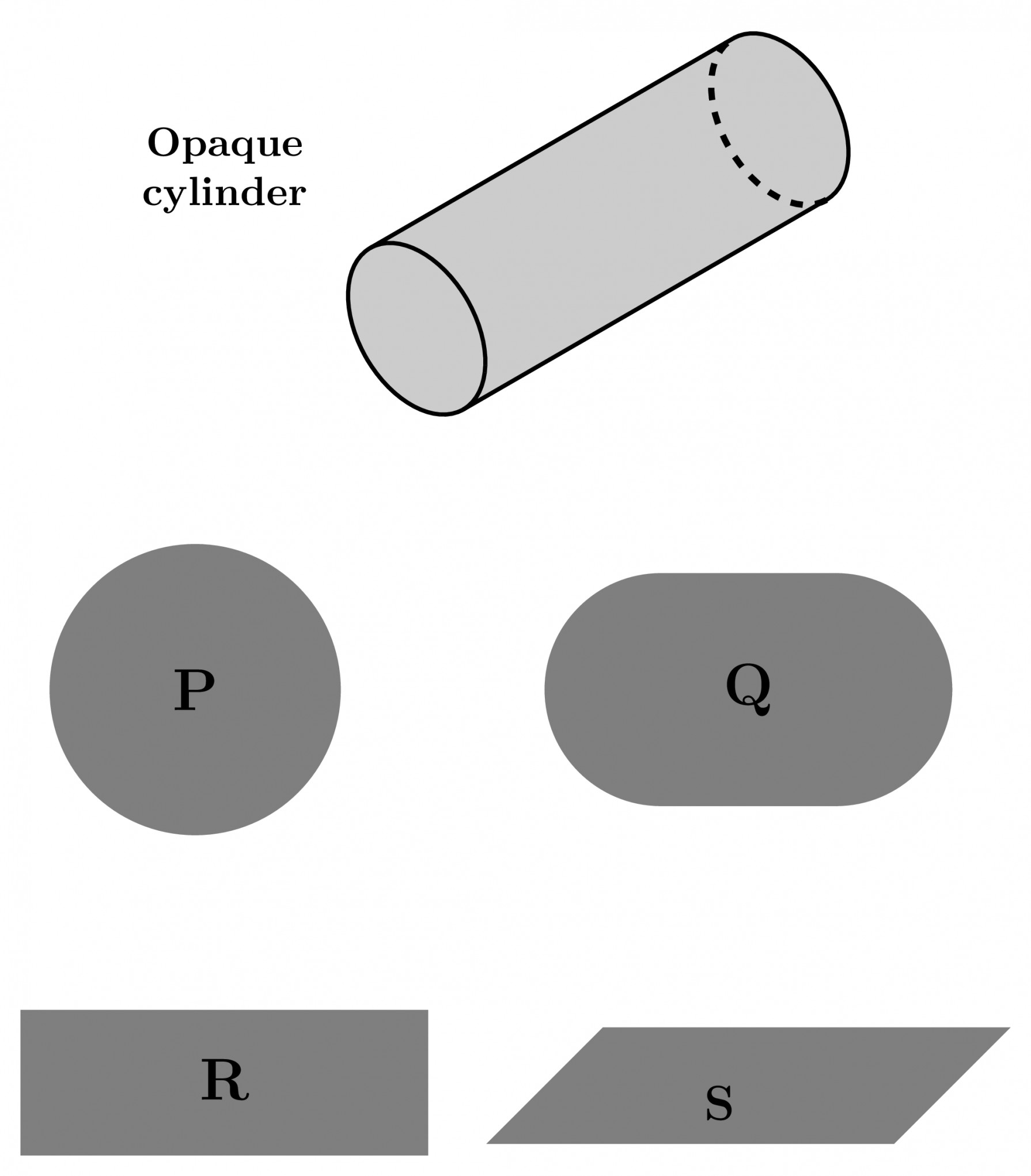An opaque cylinder (shown below) is suspended in the path of a parallel beam of light, such that its shadow is cast on a screen oriented perpendicular to the direction of the light beam. The cylinder can be reoriented in any direction within the light beam. Under these conditions, which one of the shadows $\mathbf{P}, \mathbf{Q}, \mathbf{R}$, and $\mathbf{S}$ is NOT possible?

- $\mathrm{P}$
- $\mathrm{Q}$
- $\mathrm{R}$
- $\mathrm{S}$